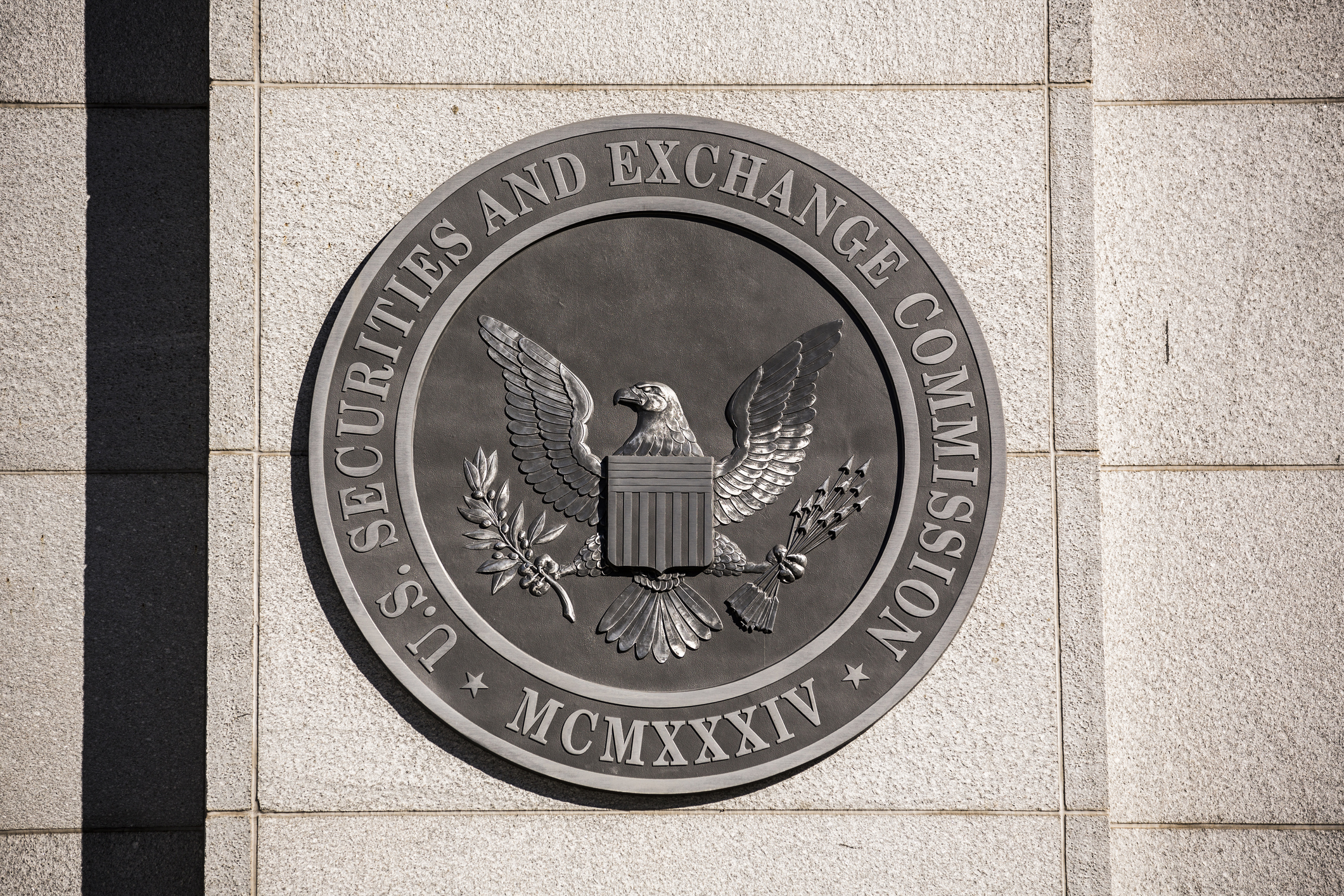The Delayed September CPI Report is Out. Here's What it Signals for the Fed.
The September CPI report showed that inflation remains tame – and all but confirms another rate cut from the Fed.


The latest Consumer Price Index (CPI) report showed that President Donald Trump's tariff policies have had a muted impact on cost pressures. And it all but guarantees that the Federal Reserve will cut rates again when it meets next week.
According to the Bureau of Labor Statistics, headline CPI was up 0.3% month over month in September, slower than the 0.4% rise seen in August and the 0.4% increase economists expected.
The CPI was 3.0% higher year over year, a quicker pace than the month prior. Still, the results arrived below the 3.1% increase economists anticipated.
From just $107.88 $24.99 for Kiplinger Personal Finance
Become a smarter, better informed investor. Subscribe from just $107.88 $24.99, plus get up to 4 Special Issues

Sign up for Kiplinger’s Free Newsletters
Profit and prosper with the best of expert advice on investing, taxes, retirement, personal finance and more - straight to your e-mail.
Profit and prosper with the best of expert advice - straight to your e-mail.
Gas prices were the "largest factor" behind the monthly increase in headline CPI, according to the BLS, surging 4.1% from August to September. Food costs were also on the rise last month, up 0.2%.
Core CPI, which excludes volatile food and energy prices and is seen as a better measure of underlying inflation trends, was up 0.2% month over month and 3.0% year over year. Both figures were lower than those seen in August and economists' forecasts.
"Inflation might not be slowing, but it's not surprising to the upside anymore," says David Russell, global head of market strategy at TradeStation. "The details are positive, with shelter and transportation services moderating. Some key parts of the basket are cooling even if tariffs nudge items like apparel higher."
Russell adds that the September CPI report keeps the Fed on track to cut rates by a quarter-percentage point at next week's meeting, and will likely have policymakers striking a more dovish stance moving forward
According to CME FedWatch, futures traders are now pricing in a 99% chance the Fed will issue its next quarter-point rate cut at its meeting next week. Odds for a December rate cut have risen to 97% from 73% one month ago.
While delayed by a little over a week, the BLS released today's data so that the Social Security Administration could calculate the cost-of-living adjustment (COLA). But with data collection services still suspended, it's unclear when we'll see the next CPI report.
That said, with the September CPI data now in the books, here's some of what economists, strategists and other experts around Wall Street have to say about the results and what they could mean for investors going forward.
Experts' takes on the September CPI report

"A very good inflation print, with muted impact from tariffs as expected. Gasoline prices hurt what could have been an even better number, but that is solvable. While inflation is still above target levels, this paves the way for the Fed to continue its rate-cut cycle, and further solidifies confidence in the bull market. Expect volatility on a broader trend upward in equity markets from here." – Jason Barsema, Co-Founder and President at Halo Investing
"Much like a Sherlock Holmes' story, inflation is the dog that didn't bark. So many people have been expecting a sharp increase in inflation and have positioned bearishly as a result, but the market is likely to keep squeezing the shorts until they realize that the economy – and corporate America – is more resilient than many expected." – Chris Zaccarelli, Chief Investment Officer for Northlight Asset Management
"The CPI inflation report paves the way for the Fed to follow up its September meeting rate cut with another one next week. This will likely be a support to investors to push the stock market to new highs. Declining interest rates will grease the wheels of the economy and be a benefit to corporations and consumers." – Ross Bramwell, CFA, Managing Director of Investment Communications, Shareholder at HB Wealth
"While signs of tariff-induced inflation are apparent in select categories such as apparel and furniture, goods prices increased at a slower pace in September than August broadly. This suggests that the pass-through of higher tariffs to consumers has continued to undershoot expectations, which in turn has opened the door for the Fed to lower rates to support a cooling labor market." – Josh Jamner, Senior Investment Strategy Analyst at ClearBridge Investments
"The Fed has telegraphed a 25 basis point cut for next week as well as another 25 basis point cut for December. With the government shutdown and lack of available data, we expect these cuts to proceed. Once the government reopens and if we start to see weak unemployment data and the unemployment rate rises precipitously towards 5%, we could expect either a 50 basis point cut for December or the Fed to communicate a string of cuts in 2026." – Skyler Weinand, Chief Investment Officer at Regan Capital
Related content
- How to Invest for Fall Rate Cuts by the Fed
- When Is the Next Fed Meeting?
- 10 Cities Hardest Hit By Inflation: Did Yours Make the List?
- An Expert Guide to Outsmarting Inflation: Don't Let It Restrict Your Retirement
Profit and prosper with the best of Kiplinger's advice on investing, taxes, retirement, personal finance and much more. Delivered daily. Enter your email in the box and click Sign Me Up.

With over a decade of experience writing about the stock market, Karee Venema is the senior investing editor at Kiplinger.com. She joined the publication in April 2021 after 10 years of working as an investing writer and columnist at a local investment research firm. In her previous role, Karee focused primarily on options trading, as well as technical, fundamental and sentiment analysis.
-
 The SEC Is Concerned for Older Investors and Retirement Savers. Here's What You Should Know
The SEC Is Concerned for Older Investors and Retirement Savers. Here's What You Should KnowThe SEC focusing on older investors, retirement and college savers, and private securities. Here's how those changes impact you.
-
 Vesting, Catch-Ups and Roths: The 401(k) Knowledge Quiz
Vesting, Catch-Ups and Roths: The 401(k) Knowledge QuizQuiz Test your understanding of key 401(k) concepts with our quick quiz.
-
 Why You Should Pay Attention to Company Guidance
Why You Should Pay Attention to Company GuidanceUnderstanding how corporate profit forecasts affect analysts’ estimates and stock ratings can help you make investment decisions.
-
 The SEC Is Concerned for Older Investors and Retirement Savers. Here's What You Should Know.
The SEC Is Concerned for Older Investors and Retirement Savers. Here's What You Should Know.The SEC focusing on older investors, retirement and college savers, and private securities. Here's how those changes impact you.
-
 Why You Should Pay Attention to Company Guidance
Why You Should Pay Attention to Company GuidanceUnderstanding how corporate profit forecasts affect analysts’ estimates and stock ratings can help you make investment decisions.
-
 How to Protect Yourself and Others From a Troubled Adult Child: A Lesson from Real Life
How to Protect Yourself and Others From a Troubled Adult Child: A Lesson from Real LifeThis case of a violent adult son whose parents are in denial is an example of the extreme risks some parents face if they neglect essential safety precautions.
-
 To Build Client Relationships That Last, Embrace Simplicity
To Build Client Relationships That Last, Embrace SimplicityAs more automation becomes the norm, you can distinguish yourself as a financial professional by using technology wisely and prioritizing personal touches.
-
 Client Demand Is Forcing Financial Advisers to Specialize: How to Deliver
Client Demand Is Forcing Financial Advisers to Specialize: How to DeliverThe complexity of wealthy clients' needs — combined with AI and consumer demand — suggests the future of financial planning belongs to specialized experts.
-
 Stocks Rise to the Spirit of the Season: Stock Market Today
Stocks Rise to the Spirit of the Season: Stock Market TodayInvestors, traders and speculators are beginning to like the looks of a potential year-end rally.
-
 Here's How Much You Can Earn with a $100,000 Jumbo CD
Here's How Much You Can Earn with a $100,000 Jumbo CDYou might be surprised at how fast a jumbo CD helps you reach your goals.
-
 A Financial Planner Takes a Deep Dive Into How Charitable Trusts Benefit You and Your Favorite Charities
A Financial Planner Takes a Deep Dive Into How Charitable Trusts Benefit You and Your Favorite CharitiesThese dual-purpose tools let affluent families combine philanthropic goals with advanced tax planning to generate income, reduce estate taxes and preserve wealth.